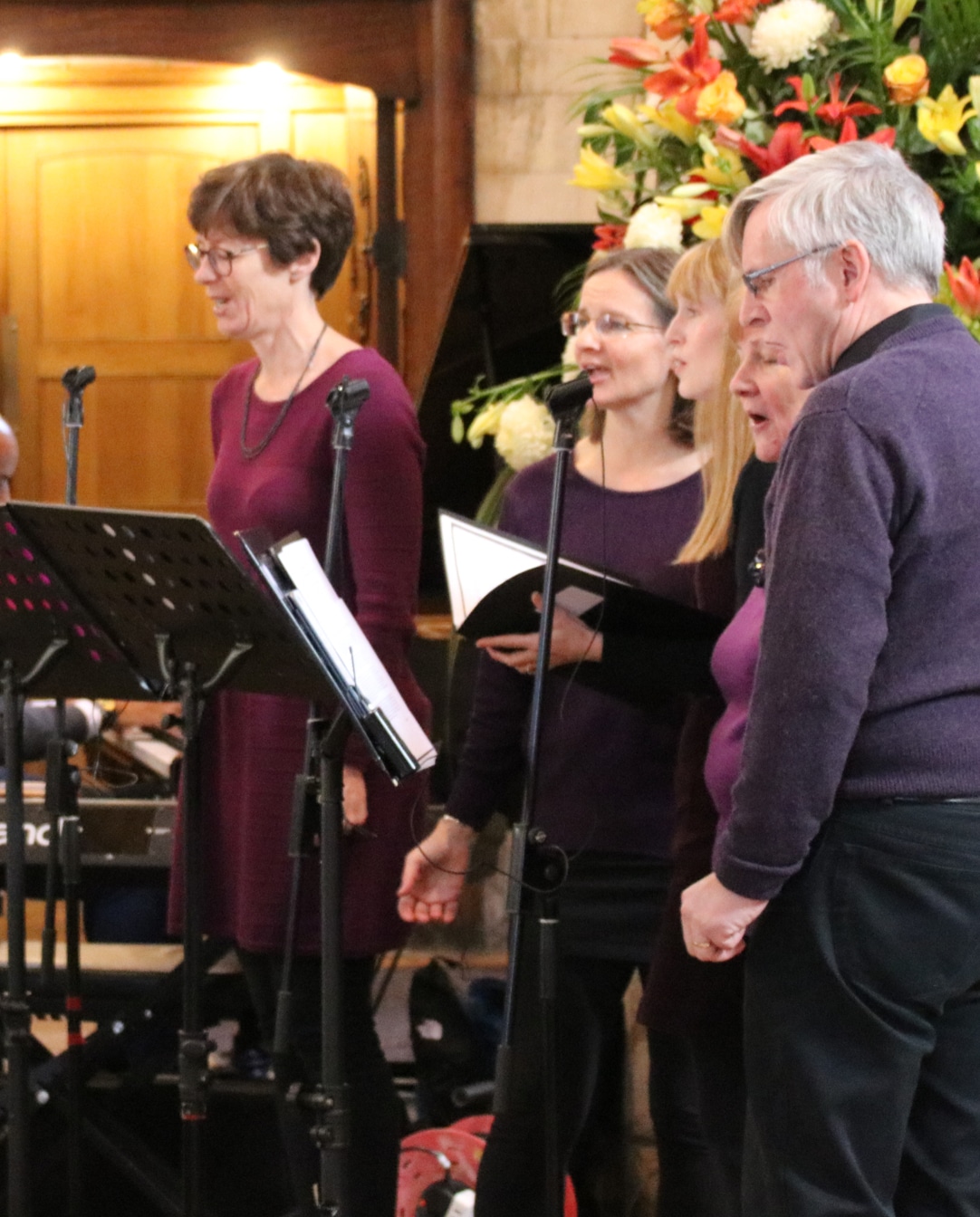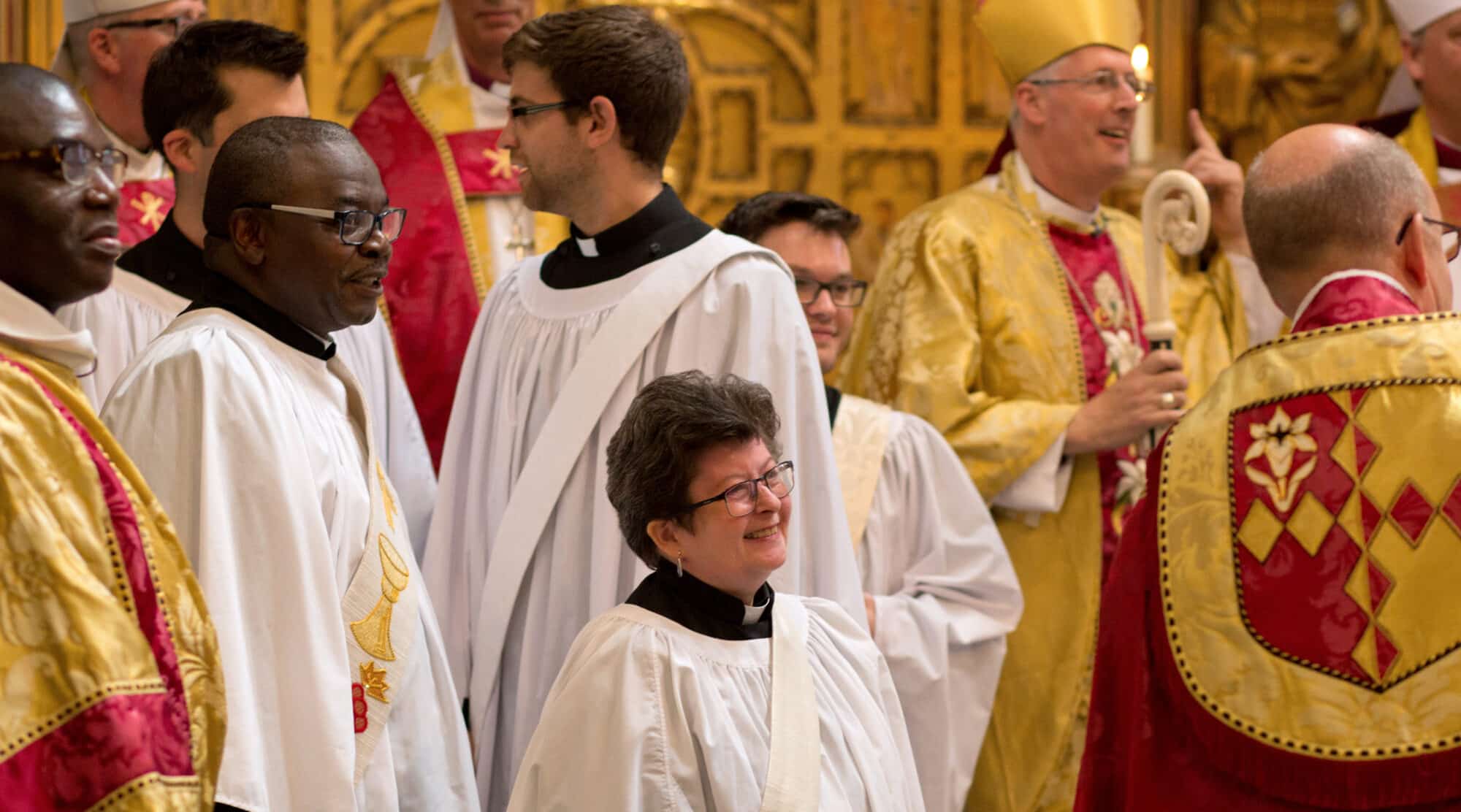From the start the Diocese was extremely diverse, containing both pockets of extreme poverty, in the overcrowded tenements of South London, and the prosperous villages and suburbs of south-west London and Surrey. Successive bishops faced challenges in ministering to populations with such differing needs against a backdrop of rapid social and cultural change, which saw churchgoing decline and the welfare state take over some of the functions previously performed by the Church.
The need for the pastoral care given by parishes continued, particularly during the hardships and destruction wrought by the Second World War. Hundreds of people lost their homes, and many their lives, during the Blitz. In the programme of rebuilding that took place after the war, many of the Diocese’s churches and schools were repaired and again witnessed to England’s traditional faith at the heart of their communities.
Radical faith
The Church continued to face problems, however. Amid increasing social liberalisation in the post-war period, fewer and fewer people saw it as central to their lives. In the 1960s, Bishop Mervyn Stockwood tackled these problems head on.
He encouraged both those who worked hard in the old patterns of the Church and the new blood who wanted experiments. Radically adventurous theologians, priests in jeans out on the streets, processions against racism, the charismatic movement, ecumenical co-operation, the Southwark Ordination Course to train “worker-priests”, a large and lively Diocesan staff: all these were signs of new life.
The Diocese now presented a spectacle of pioneering courage in its mission to a largely secularised population. Although some dismissed this as “South Bank religion”, it was inspired mainly by the spread of the Parish Communion movement, which culminated in the Alternative Service Book (1980). And Southwark came top of the league in the Church of England when it came to giving by its laity. Its reputation as radical, innovative, surprising and vibrant has continued ever since.
Southwark today
The tenth and current Bishop is the Rt Revd Christopher Chessun, who was enthroned in March 2011. A strong advocate for the parish system as the most effective means of church presence and engagement in the life of local communities, he has driven forward the process of renewing the governance structures of the Diocese, ensuring that they are fit for purpose.
Under his oversight, the Diocese has committed itself to valuing and empowering the laity, vocational renewal and breathing new life into Deaneries. This led, first, to the Hearts on Fire initiative in 2016 and subsequently to the Southwark Vision. This Vision expresses the shared commitment of all in the Diocese to journey together in faith, walking with Jesus, welcoming all and growing in both numbers and discipleship. You can read the full Southwark Vision here.
In 2015 Bishop Christopher entered the House of Lords and has used this as an opportunity to speak out on matters concerning refugees and those who are suffering because of their faith as well as matters related to poverty and injustice.
Bishops of Southwark
Read more1905 Edward Stuart Talbot
1911 Hubert Murray Burge
1919 Cyril Foster Garbett
1932 Richard Godfrey Parsons
1942 Bertram Fitzgerald Simpson
1959 Arthur Mervyn Stockwood
1980 Ronald Oliver Bowlby
1991 Robert Kerr Williamson
1998 Thomas Frederick Butler
2011 Christopher Thomas James Chessun



